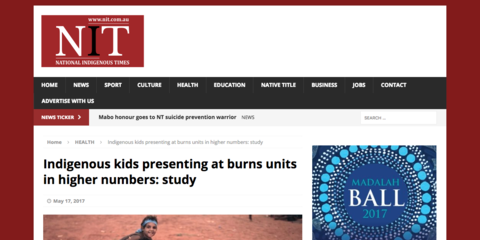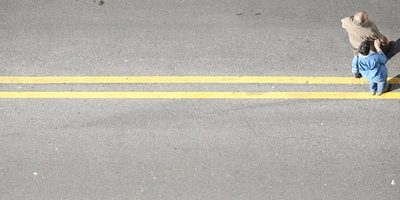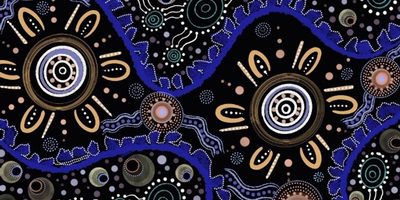
Study spotlights Aboriginal and Torres Strait Islander children and serious burns injuries
More Aboriginal and Torres Strait Islander children are going to hospital in NSW with serious burns than non-Aboriginal children.
A study led by the UNSW Centre for Big Data Research in Health and supported by researchers at The George Institute for Global Health also found Aboriginal and Torres Strait Islander children are less likely to be treated in a hospital with a paediatric burns unit, despite needing more intensive treatment and a longer stay.
The data linkage study investigated the differences in burn injuries in children, examining the cause of the injury, its location on the body, the total body surface affected (% TBSA), burn depth and length of hospital stay.
The proportion of Aboriginal and Torres Strait Islander children with burns who presented with injuries affecting more than 10% TBSA was greater and the hospital stay was usually almost three days longer.
A smaller proportion of Aboriginal and Torres Strait Islander children with burns were treated in a hospital with a paediatric tertiary burns unit, fitting with previous studies that have shown Aboriginal people experience inequities to medical services.
First author on the paper published today in the Medical Journal of Australia, Holger Möller, says the higher proportion of Aboriginal and Torres Strait Islander children presenting with burns affecting more than 10% TBSA is of particular concern.
“Burns can be among the most devastating of child injuries and can result in long-term physical and psychological impairment thus affecting the child’s development and future life,” he said.
“We could not assess the longer term outcomes of burn injury in this study and to date little is known about the long term outcomes, the post-discharge care, and the impact of care on functional outcomes in Aboriginal children.”
Scalds were the leading cause of burn injury to both Aboriginal and Torres Strait Islander children (47%) and non-Aboriginal and Torres Strait Islander children (62%). There was a higher proportion of flame burns in Aboriginal and Torres Strait Islander children, which may be partially explained by the higher number of Aboriginal children living in rural and remote areas where there are more outdoor fires.
The study involved population-based cohort analysis of linked hospital and mortality data for 2000–2014, with 35,749 Aboriginal and Torres Strait Islander children and 1,088,938 non- Aboriginal and Torres Strait Islander children aged under 13 years as participants.
The study was done with researchers from Neuroscience Research Australia, Australian National University, The George Institute for Global Health, Flinders University and the University of Wollongong.
Study author, Professor Rebecca Ivers, director of the Injury Division at The George Institute is currently exploring the care of Aboriginal children with burns through a cohort study in Queensland, NSW, South Australia and the Northern Territory. The study is following children for at least 2 years post burn in order to understand the impact and cost of burns. A roundtable is being planned for 2018 to develop a new model of care. The study utilises Indigenous research methodologies and three Aboriginal PhD students are working on the study.
Professor Ivers said, "The study builds on previous understanding about burns in Aboriginal and Torres Strait Islander children but rather than just measuring inequality, will result in a new transformative model of care that meets the needs of patients and caregivers."
Dr Tamara Mackean, senior research fellow in Aboriginal health at The George Institute, Waljen woman and Public Health Medicine Physician, said that “our research has highlighted there is a need to reform burn care for Aboriginal and Torres Strait Islander people. Our efforts are seeking to understand the true impact of burns and we are working with clinicians, Aboriginal and Torres Strait Islander people and organisations to develop new transformational models of care. We now have three Aboriginal students enrolled in PhD research on this project which is contributing to growing the Aboriginal health researcher workforce.”
The study is governed by an Aboriginal advisory committee.






